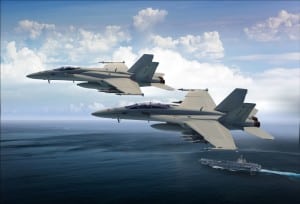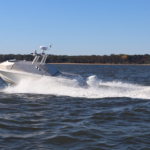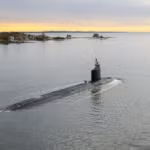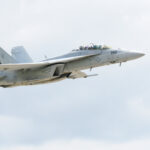
The Navy is looking to reduce the time it takes to conduct the Service Life Modernization (SLM) effort for each F/A-18E/F Super Hornet to 12 months by 2024 to help reduce the service’s strike fighter shortfall. In the SLM program, aircraft builder Boeing [BA] takes Block II Super Hornets nearing the end of their 6,000-hour service lives and upgrades them to the newest Block III configuration, particularly raising the lifespan to 10,000 hours for each airframe. Chief of Naval Operations…

 By
By 











